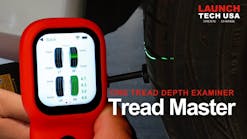Mastering Diagnostics #13: Voltage Drop - The Circuit Stress Test
Motor Age Technical Editor Brandon Steckler is back again for Mastering Diagnostics, episode 13. In this episode, Brandon discusses the importance of stress testing the circuit of an inoperative component before committing to the actual repair.
In many situations, a vehicle will present with an inoperative component (like a fuel pump for example). Many technicians find that the fuel pump's internal circuity is electrically open or has extremely high internal resistance.
As a result, the faulty fuel pump is replaced but the technician discovers (only after replacement) that the circuit still doesn’t function. And here is where the technician went wrong. An open fuel pump will not allow current to flow (and that is the reason for replacement) however, there would be no way to detect an underlying circuit issue (like a poor ground connection or poor contact in a relay).
It's never a great situation when we as technicians or service advisors must face the customer a second time, and in this case, tell them that the $400 fuel pump we had just condemned and replaced still has not corrected the issue.
Follow Brandon through this valuable lesson on Ohm’s law, or more importantly, how voltage drop, resistance, and amperage all relate to each other. Learn how to implement a testing technique that will discover underlying circuit faults, even if the circuit doesn’t function at that time. Make the accurate diagnosis THE FIRST TIME and prevent comebacks, regardless of the vehicle type or circuit being addressed.
Due to factors beyond the control of Endeavor Business Media, no information contained in this video shall create any express or implied warranty or guarantee of any particular result. Any injury, damage, or loss that may result from improper use of these tools, equipment, or the information contained in this video is the sole responsibility of the user and not Endeavor Business Media. The tool and/or equipment featured in this video was supplied by the manufacturer and may or may not be retained by the reviewer at no cost.



